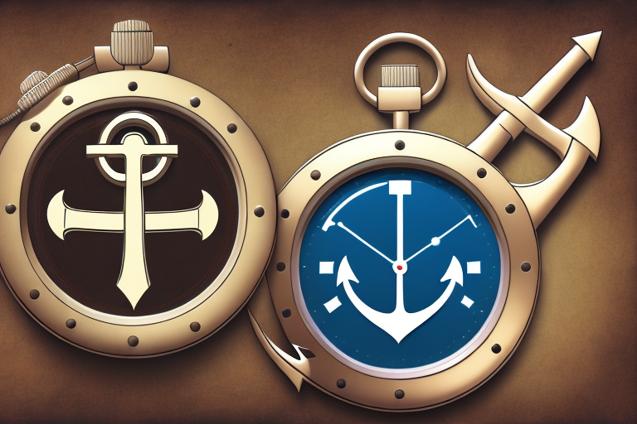
Discover the importance of the Quick Stop Maneuver and how it can keep you and your crew safe in emergency situations while sailing.
The Quick Stop Maneuver
Sailing is an art that requires constant learning and practice. As you embark on your journey to explore the world with your family, it’s essential to master various sailing skills and techniques to ensure a safe and enjoyable experience. One such advanced sailing maneuver that every sailor should know is the Quick Stop Maneuver.
The Quick Stop Maneuver is a crucial skill to have in your sailing arsenal, as it allows you to stop your boat quickly and efficiently in case of an emergency, such as a man overboard situation. In this comprehensive guide, we will delve into the details of the Quick Stop Maneuver, its importance, and the step-by-step process to execute it successfully.
Table of Contents
- Understanding the Quick Stop Maneuver
- Why is the Quick Stop Maneuver Important?
- Executing the Quick Stop Maneuver
- Tips for a Successful Quick Stop Maneuver
- Conclusion
Understanding the Quick Stop Maneuver
The Quick Stop Maneuver is a technique used to stop a sailboat quickly and efficiently in case of an emergency, such as a man overboard situation. It involves turning the boat into the wind, tacking without adjusting the sails, and then turning back towards the person in the water to approach them and stop the boat.
The primary goal of the Quick Stop Maneuver is to keep the person in the water within sight and reach them as quickly as possible. This maneuver is considered one of the most effective methods for recovering a person overboard, as it minimizes the distance traveled away from the person and allows for a controlled approach.
Why is the Quick Stop Maneuver Important?
The Quick Stop Maneuver is essential for several reasons:
-
Safety: In a man overboard situation, time is of the essence. The Quick Stop Maneuver allows you to stop your boat quickly and efficiently, increasing the chances of a successful recovery.
-
Control: The maneuver provides you with better control over your boat’s speed and direction, enabling you to approach the person in the water safely and accurately.
-
Visibility: By minimizing the distance traveled away from the person in the water, the Quick Stop Maneuver helps maintain visual contact, making it easier to locate and recover the person.
-
Versatility: The Quick Stop Maneuver can be executed on various types of sailboats, making it a valuable skill for all sailors to master.
Executing the Quick Stop Maneuver
Now that we understand the importance of the Quick Stop Maneuver let’s dive into the step-by-step process of executing it successfully.
Step 1: React Immediately
As soon as you realize that someone has fallen overboard, it’s crucial to react immediately. Assign someone to keep a constant eye on the person in the water and point towards them at all times. This “spotter” will help maintain visual contact and guide the helmsperson during the maneuver.
Step 2: Tack Without Touching the Sheets
To initiate the Quick Stop Maneuver, turn the boat into the wind and tack without adjusting the sails. This means you should leave the jib sheet cleated on the original side and not touch the mainsheet. By doing this, the sails will be backwinded, and the boat will slow down significantly.
Step 3: Monitor the Wind and Boat Speed
As the boat slows down, keep an eye on the wind direction and your boat’s speed. The goal is to maintain a controlled speed while turning back towards the person in the water. Be prepared to make adjustments to the rudder and sails as needed to maintain control.
Step 4: Turn Back Towards the Person in the Water
Once the boat has slowed down, and you have control over its speed and direction, begin turning back towards the person in the water. Use the “spotter” to guide you and ensure you maintain visual contact with the person at all times.
Step 5: Approach the Person and Stop the Boat
As you approach the person in the water, be prepared to make adjustments to your boat’s speed and direction to ensure a safe and controlled approach. When you are close enough, release the jib sheet to depower the sails and stop the boat. At this point, you can throw a lifebuoy, extend a boat hook, or use any other available means to assist the person in getting back on board.
Tips for a Successful Quick Stop Maneuver
-
Practice: Like any other sailing skill, practice is key to mastering the Quick Stop Maneuver. Regularly practice the maneuver with your crew to ensure everyone is familiar with the process and can execute it efficiently in case of an emergency.
-
Communication: Clear and effective communication between the helmsperson, spotter, and crew is crucial for a successful Quick Stop Maneuver. Make sure everyone knows their role and can communicate effectively during the process.
-
Stay Calm: In an emergency situation, it’s essential to remain calm and focused. Take a deep breath, assess the situation, and execute the Quick Stop Maneuver with precision and control.
-
Adapt: Be prepared to adapt the maneuver based on the specific conditions and characteristics of your boat. Different boats may require slight adjustments to the process, so be ready to make changes as needed.
Conclusion
The Quick Stop Maneuver is an essential skill for every sailor to master. By understanding its importance and following the step-by-step process outlined in this guide, you can ensure a safe and controlled approach in case of a man overboard situation. Remember to practice regularly, communicate effectively, and stay calm during the maneuver. With time and practice, you’ll be well-equipped to handle emergencies and keep your family safe as you explore the open sea together.